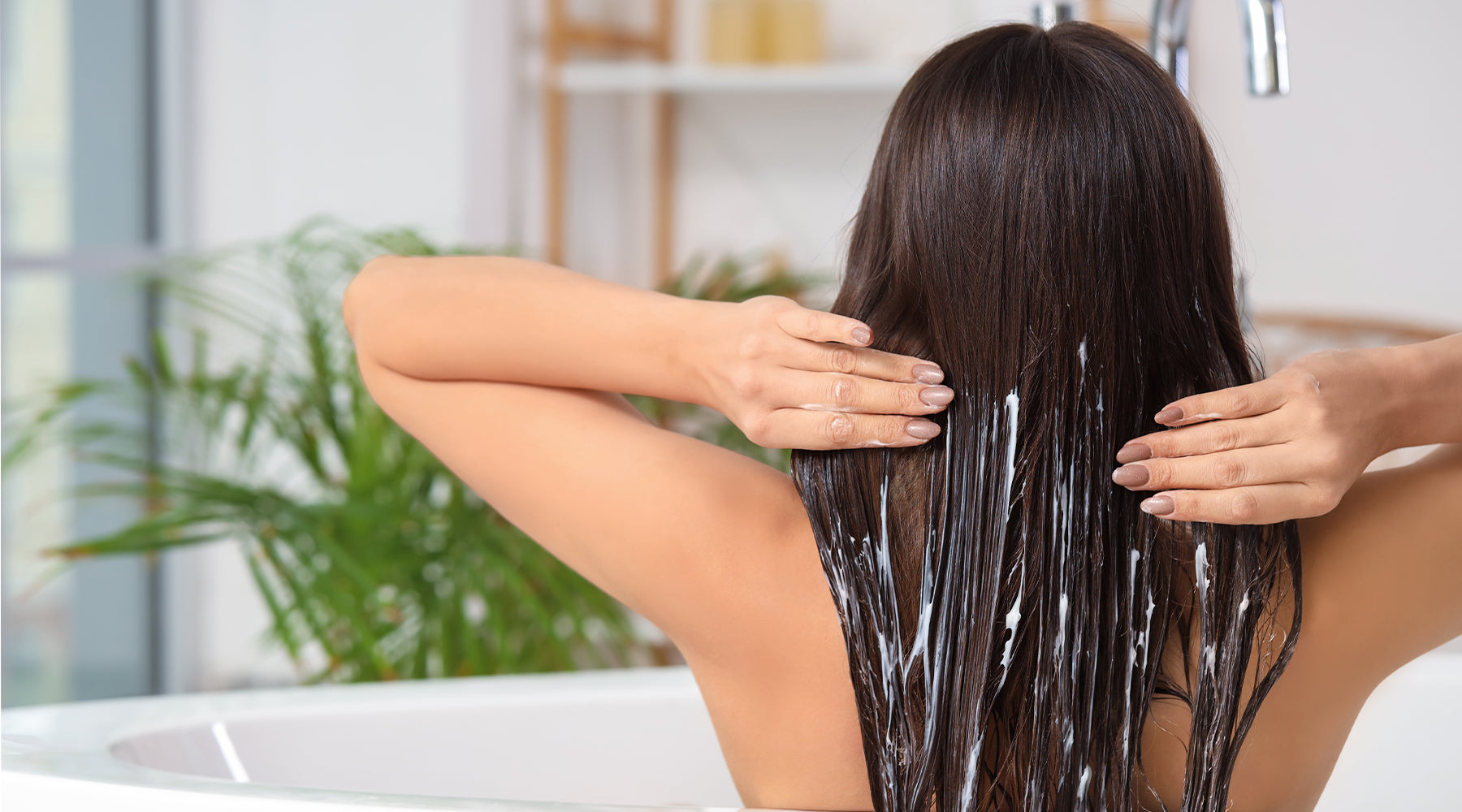
In the same way that knowing your hair type can help you tailor your haircare routine to your needs, it can pay off to learn how porous those lovely locks are. This calls for a good understanding of what a porosity test is in hairdressing and how to translate the results into the necessary steps to get your hair looking its best.
We know that hair care jargon can be really confusing, so we’ve put together this easy guide to hair porosity that anyone can follow. Let’s get into it!
What is hair porosity?
Hair porosity is a term used to describe how well hair is able to absorb moisture and oils and retain them. This characteristic can have quite an impact on how your hair reacts to different environments, substances and hair dye treatments.
You can break it down into three core types.
- Low porosity: Hair with closely packed cuticles.
- Medium porosity: Hair with looser bonded cuticles.
- High porosity: Hair with widely spaced cuticles.
Sometimes you can tell the porosity levels of the hair by simply running your fingers through the strands to feel their texture. If smooth, then it is likely low porosity. However, if you find that the strands feel rough or bumpy, then it is probably highly porous.
The anatomy of our hair
A basic understanding of the composition of our hair can help contextualise what we mean by hair porosity. Essentially, your hair is a collection of dead cells in a distinct arrangement consisting of three layers:
- The cuticle: The outermost layer of the hair made up of individual cuticles that overlap like tiles on a roof.
- The cortex: The thickest layer of the strand in the middle, containing fibrous proteins and the pigments behind your hair colour.
- The medulla: This is the central and innermost layer of the hair shaft.
Low porosity hair is characterised by overlapping cuticles that are tightly packed together. Due to the lack of spaces between the cuticles, water, oils, and conditioners have a difficult time delivering moisture to the hair shaft.
In contrast, highly porous hair has more open cuticles that allow this essential moisture to pass in and out without retaining any residual oils.
For a healthy head of hair, you need to achieve a balance between these two types and ensure that the right amount of moisture enters the strands and is retained.
Types of hair porosity: What it means for you
We’ve covered all the sciency stuff, but what does your hair porosity type mean for your day-to-day life?
High porosity hair
Sad to say, high porosity hair is the most damaged of all the porosities. Unlike the following types, the hair cuticles are very open, leading to breakage and dullness. This means that some of the tell-tale signs include excessive dryness, frizz and a tendency towards damage.
Highly porous hair will also absorb products and water really quickly and dry faster than other types. It’s more common in finer hair types.
Medium porosity hair
Medium porosity hair sits between both ends of the spectrum and allows moisture to enter and leave at a slower rate. For this reason, the hair will require less maintenance and appear neither too shiny nor too dry and brittle.
Low porosity hair
Folks who have 3C type hair or tight curls are the most likely demographic to have low porosity hair. This is because the cuticle is smooth. You might notice that with a low level of porosity it takes a long time for your hair to get wet and just as long to air dry.
To prevent greasiness and products sitting on the top of your hair it’s important to get your moisturisation regimen up to scratch, especially due to the lack of elasticity.
How to conduct a porosity test on your hair
A porosity test is a common practice in hairdressing. In the salon, you might see a hairdresser do this before deciding to forward with a chemical treatment. The best part? It’s extremely simple!
Step 1: Prepare your hair
For the most accurate results, ensure that your hair is washed and dry, clear of any residual product on the surface of the strands.
Step 2: Test a strand
Gently pull out a single strand of your hair and drop it into a clear glass of water.
Step 3: See the results
Carefully observe the strand’s behaviour for 2-5 minutes to see where it floats.
What the water float test can tell you about hair porosity
This easy test helps you check the ability of the hair to absorb and retain moisture.
- Hair that floats at the top of the water, before sinking down to the bottom will likely exhibit low porosity.
- Hair that floats somewhere in the middle of the glass is probably medium porosity.
- Hair that sinks to the bottom of the glass will usually demonstrate high porosity.
Can you change your hair porosity?
While genetics have a big factor in determining the type of porosity a person has, that’s not the entire story.
Depending on your genes you can be born with naturally higher or lower porosity, and usually this correlates with hair texture – curly hair in its virgin state tends to be drier, so more porous.
However, hair porosity isn’t fixed. It can change any time the hair structure is altered, or often more accurately, damaged. There are a number of things that can permanently influence how porous your hair is, some more drastic than others:
- How often you wash your hair, i.e. overwashing it.
- Failing to protect your hair from sun damage and excessive UV exposure.
- Air pollution.
- Regular use of heat styling products (hair straighteners, curlers, driers).
Improving low porosity hair
As we’ve mentioned, low porosity hair tends to repel moisture due to the structure of the strands – making it annoying to manage and style. While it’s not strictly unhealthy, low porosity hair might be a sign that your conditioning game needs a little work.
Here are some tips to help you tame your high porosity hair, leaving it supple, soft and healthy.
- Try to avoid ‘heavier’ products that contain ingredients like oils or butter as this can create product build-up.
- Remember to wash and condition your hair once or twice a week.
- Apply conditioners when the hair is already wet or after it has steamed to raise the cuticle.
- Look for products that are more easily drawn into the hair: think of ingredients like glycerine over oils.
Improving high porosity hair
Highly porous hair will have a hard time retaining moisture, so the best treatments involve infusing it with the right oils and proteins to restructure the weakened bonds of the hair.
If your hair has become prone to breakage or feels excessively dry, these are a few tips you can try out.
- After washing your hair, run it under cold water to seal off the cuticle and trap in the moisture.
- Minimise heat styling and use lukewarm water when washing or conditioning – this will prevent the cuticle from lifting and creating further damage.
- Don’t use any chemical dyes as they might cause damage, instead opt for natural alternatives such as henna.
- Opt for sealing products as well as denser oils such as hemp seed or castor oil.
Improving medium porosity
If you’re blessed with medium porosity locks, lucky you! This type is the easiest to look after and maintain. As the cuticles tend to be looser, moisture penetrates with ease and stays in there, protecting against breakage and dryness. While there’s not too much to do on the moisture front, we recommend using a deep conditioning mask to maintain your hair health.
Is henna good for low porosity hair?
Whether henna is the perfect product for low porosity hair is up for debate as it can have slightly varying results from person to person.
You’ll find that the benefits of henna from its antiseptic properties to the ability to restore damage are compatible with most hair types from waves to tight curls.
With low porosity hair that is particularly dry, we suggest pairing your henna treatment with a deep conditioner or hair mask to avoid sealing off too much moisture from the hair shaft.
For our high porosity people, henna products can work a treat – henna can help strengthen your locks from root to tip by reinforcing the bonds between cuticles, so it’s a wonderfully healthy choice.
Time to shine
Now we’ve covered the ins and outs of the humble porosity test in hairdressing, you should be able to identify your own type and tailor your haircare routine to your unique needs. Take note of our tips to keep your hair moisturised, whether it's waves, curls, coils or something in between.

